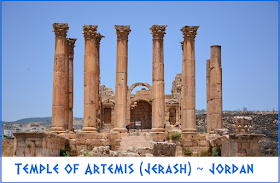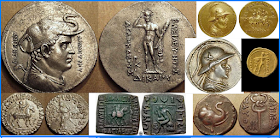According to Greek researcher Herodotus of Halicarnassus, Taucheira (also known as Tauchira and Teuchira) was one of the five Greek cities in the Cyrenaica.He presents it rather matter-of-factly, as if it were an unimportant town. Excavation of the harbor area in the 1960s, however, has brought to light ceramics that are much older than expected (fourth quarter of the seventh century), and it is now obvious that the town in fact was one of the oldest Greek settlements in Africa.
The city, which was nominally independent but probably belonged to Cyrene informally, was built along a main road from the northwest to the southeast. To the southwest was Euesperides (modern Bengazi); to the east were Barca and Ptolemais, Cyrene, and Apollonia. Directly in front of the northeastern gate were the stone quarries where the characteristic, reddish limestone of Taucheira was found.
There were trade contacts between Taucheira and the Peloponnese, Corinth, and Athens. This can be deduced from the archaeological finds.
Hellenism
The towns of the Cyrenaica submitted to Alexander the Great in the winter of 332/331 BCE, and became part of the satrapy of Egypt. After Alexander's death, one of his commanders, Thibron, started a state of his own in the Cyrenaica, but he was expelled by Ophellas, a vice-commander serving Ptolemy I Soter.
Decree of Aleximachus
Ophellas founded a new port, Ptolemais, which must have been a very serious competitor for Taucheira. He was succeeded by a man named Magas, who made Cyrenaica independent again, but Ptolemy's grandson Ptolemy III Euergetes regained the region and renamed Taucheira Arsinoe, after his stepmother Arsinoe II.
In the first century BCE, when Ptolemaic power was crumbling and the Romans had not yet established control of this era, native tribes attacked Taucheira. An inscription in the little museum of Taucheira commemorates a man named Aleximachus son of Sostratus, who had provided the money to improve the walls of the city, and to import food during a famine.
Roman Empire
Arsinoe was to keep its name, although it was briefly to be called Cleopatris during the Roman civil wars, when Mark Antony wanted to honor his wife Cleopatra VII Philopator. During the Roman age, the city received the rank of colonia, but we know not much of its history. Still, several buildings can be identified, like a place where textiles were painted and the gymnasium.
Archaeological finds document the cults of Demeter and Kore. The cult of the Libyan deity Ammon is also attested, and we know that the Apollo, Dionysus, and the Phrygian goddess Cybele were venerated as well.
Byzantine Age
New walls were built by the emperor Justinian (r.527-565), who also fortified other cities in Libya and built nearby Theodorias (the overall project is known as Ananeosis). The massive walls of Taucheira/Arsinoe enabled the Byzantine commander Apollonius, when besieged by the Muslim forces who had invaded the Cyrenaica in 641, to hold out until 645. A fortress inside the city walls documents the presence of this garrison.
Although Taucheira/Arsinoe was small compared to Lepcis Magna and Cyrene, it had the longest history: from the seventh century BCE to the seventh century CE. Its modern-day name is Tocra.
Below there is a video about a discovery of ancient artefacts from the area of Tocra.
Source: Livius, YouTube



















































